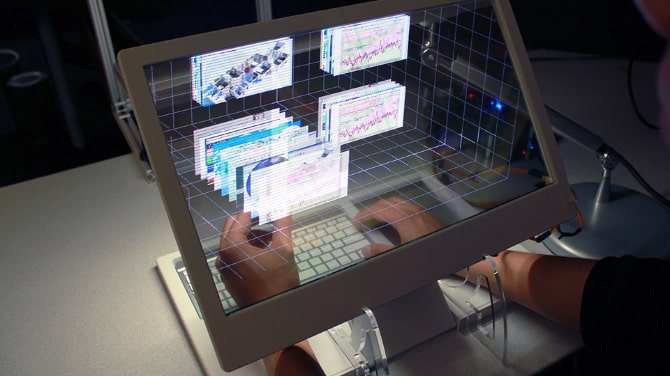Computers have pretty much stayed the same since the visual user interface was introduced. It was a huge success when it was first released, and we’re still using upgraded versions of it today. But is there really no other concept of interacting with our computers than what we are using today? I mean, the keyboard and the mouse (and of course the WYSIWYG user interface) is good and all, but maybe a transparent computer could replace our now dated ways of interacting with computers.
We have seen conceptual prototypes of transparent displays at conventions before, but not as a complete interaction solution. This transparent computer (and I don’t mean the actual computer here) is a pretty neat project that if further developed could come to change how we interact with computers in general. The system, dubbed the SpaceTop 3D Desktop Computer, works in several dimensions at once. Its purpose is to give the user new ways to manipulate, navigate and interact with what’s on the screen.
With cameras located above the computer itself, it gives the user a holographic view that adapts to the user’s point of view, making the screen almost entirely transparent. The true touch and manipulation of the objects on the transparent computer makes it super easy to inspect and change your point of view. It also makes it easy to switch from project to project. The system could of course become faster, but as a prototype, it makes the project quite interesting for future innovation when it comes to how we’ll navigate on the screen itself.
The project was developed by Jinha Lee, an interaction researcher and PhD candidate at MIT, and it has drummed up quite a buzz on the Internet. With micro pullies and resistance simulation, this could become the first true touch transparent computer which enables free 3D holographic interaction. Whether this concept will become a popular way to interact with a computer is of course up to users. I am blown away by its unique and quite impressive approach to interact with what’s on the screen.

COMMENTS